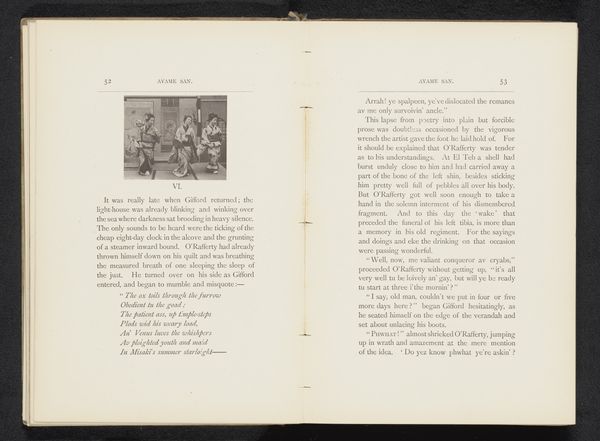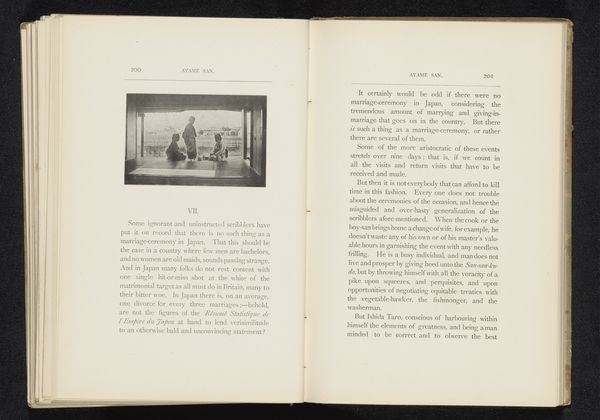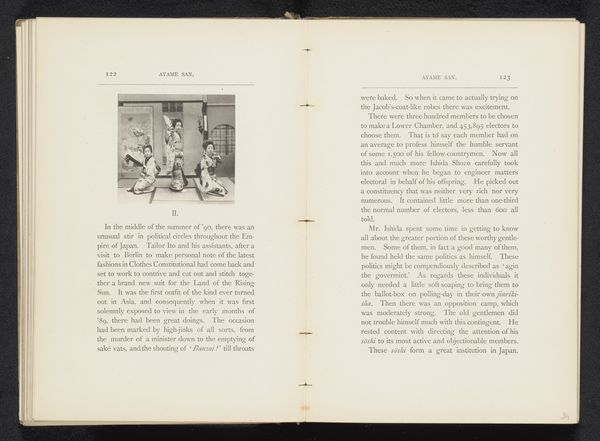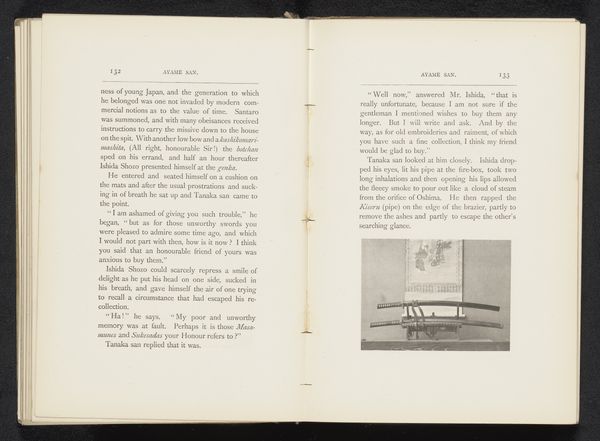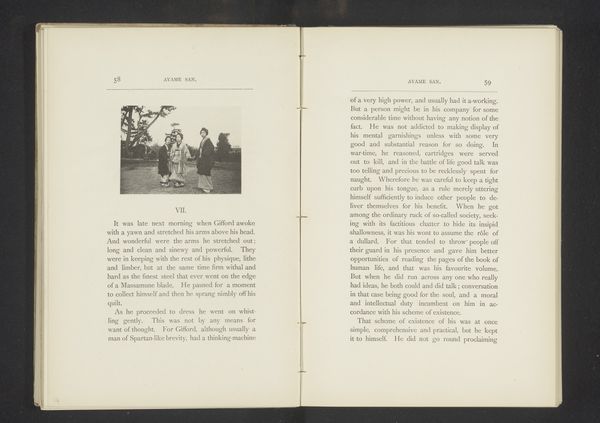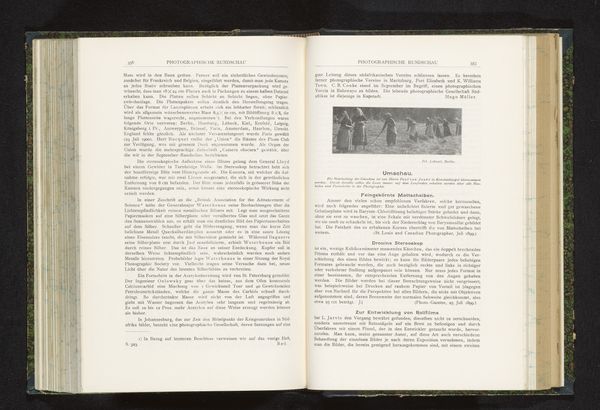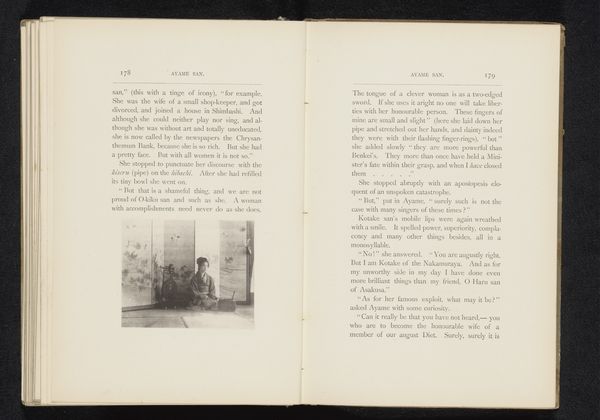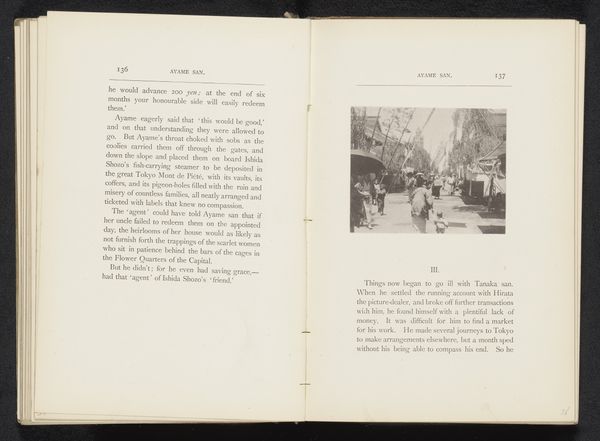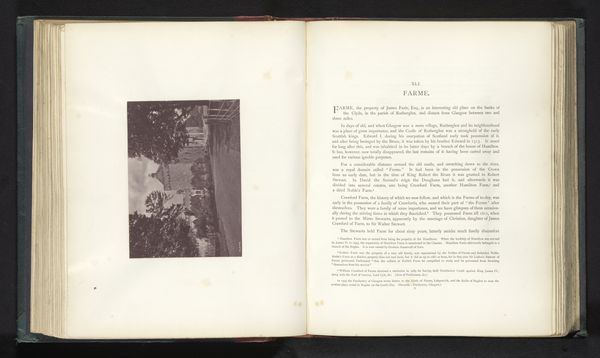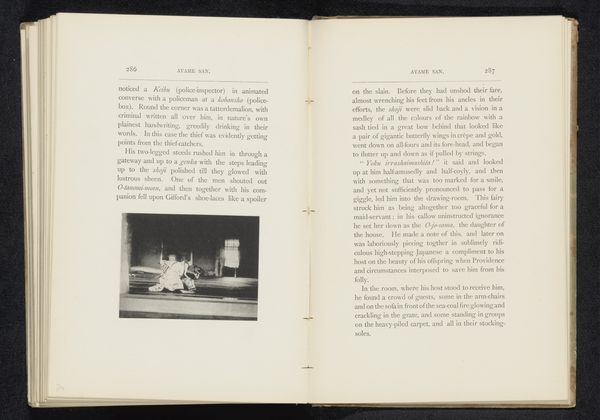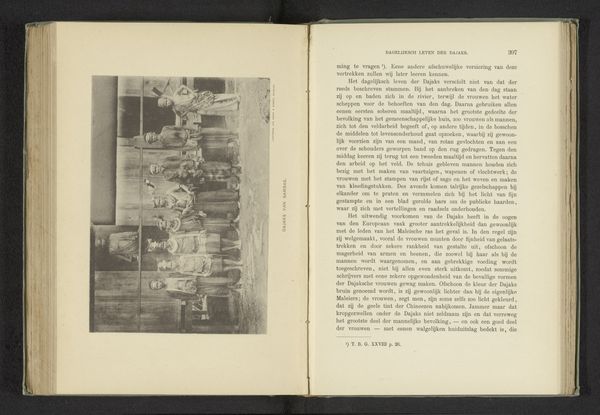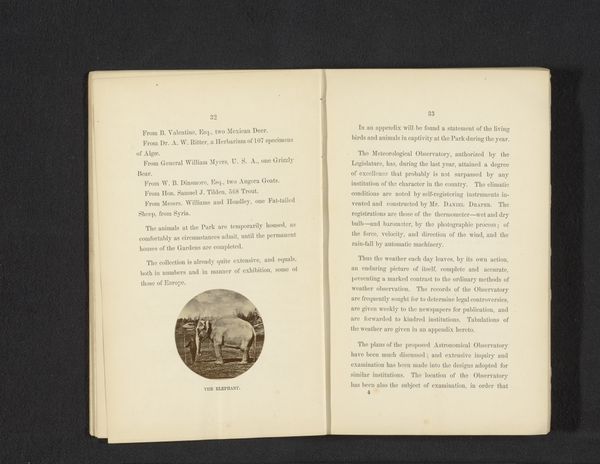
drawing, paper, ink
#
script typeface
#
drawing
#
aged paper
#
script typography
#
hand drawn type
#
paper
#
personal sketchbook
#
ink
#
hand-drawn typeface
#
thick font
#
japonisme
#
handwritten font
#
historical font
#
small font
Dimensions: height 61 mm, width 84 mm
Copyright: Rijks Museum: Open Domain
Editor: This albumen print, entitled "Drie vrouwen in een prieel op een heuvel te Japan" by William Kinnimond Burton, dates to before 1892. It's a small image of three figures under a veranda, included in a larger printed text. It makes me wonder about the colonial gaze within which this photograph and text were created. What do you see here? Curator: This image, juxtaposed with the surrounding text, speaks volumes about the cross-cultural exchanges – and the inherent power dynamics – present during the Japonisme movement. Burton, a Scottish engineer and photographer, lived and worked in Japan during the Meiji era, a period of rapid modernization and Westernization. His photographs, often collected in albums or published in books, presented a curated view of Japan for Western audiences. Editor: So, it’s not necessarily a straightforward, objective view? Curator: Not at all. Notice how the surrounding text, in its critique of Japanese waitresses and "liberal education on the lower classes," reveals a patronizing and frankly racist attitude. Burton's photographs, including this one, participated in constructing and reinforcing stereotypes of Japanese people and culture, fulfilling a desire for exoticism while maintaining a sense of European superiority. Who were these women? How did *they* want to be seen? What are the politics of this viewpoint, and what does it exclude? Editor: I hadn't considered it that way before, but it makes sense given the textual context. The photograph, then, becomes more than just an image; it's evidence of a complex, unequal relationship. Curator: Precisely. We can read this work not only for its aesthetic qualities, but also for the intricate historical layers that illuminate issues of representation, cultural appropriation, and the lingering impact of colonial ideologies on how we perceive different communities. How do you feel about that, now? Editor: I feel much more informed and a little uncomfortable but intrigued. It highlights the need to question what is *behind* the images that we often take for granted. Curator: Agreed. This photograph becomes a site of inquiry into broader social, cultural, and historical structures.
Comments
No comments
Be the first to comment and join the conversation on the ultimate creative platform.
